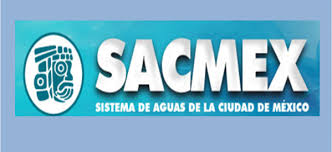Two recent articles in OOSKAnews, a publication dedicated to news in the water industry, have profound implications for Mexico’s water supply situation. The first (10 July 2015) is a report of a meeting in Guanajuato of national water and water treatment specialists (Segundo Encuentro Nacional de Áreas Técnicas de las Empresas de Agua y Saneamiento de México).
Selected quotes from the report include,
Mexico’s legal framework for water is out of date and does not reflect the country’s current reality…
Nationwide, water users only pay about 20% of the cost of production; 80% of water costs are subsidized, a situation that is not sustainable…
Legal reforms aimed at protecting human rights with regard to water had harmed service providers, who cannot cut off service to customers who fail to pay their bills.”
The report also comments on the on-going El Zapotillo dam project on the Rio Verde in Jalisco state, saying that it,
is a priority for President Enrique Pena Nieto’s administration, despite ongoing delays and legal conflicts. The $1.24 billion dollar project was approved in 2005 and is more than 80% complete. However, residents of Temacapulín, Acasico and Palmarejo have been fighting construction of the dam, which would flood their villages.”
The second report focuses on Mexico City and the estimate by Ramón Aguirre Díaz, the head of Mexico City’s Water System (SACMEX), that fixing leaks in the city’s potable water distribution network would cost around US$430 million. This is a huge cost when compared to the system’s annual budget for maintenance and improvement of infrastructure of about US$135 million.
Aguirre claims that 40% of available water is lost because of leaks in the network. SACMEX is launching a program in 2016 to provide a long-term solution to the problem. In a press interview, the official said that, “A city like ours should be able to supply every citizen by producing 26 cubic meters/second, but currently our system requires 30.5 cubic meters/second”.
The sections of the city with the most severe losses are those like Coyoacán and Tlalpan built on the soft sediments of the former lake-bed, as well as those such as Miguel Hidalgo, Cuauhtémoc, and Benito Juárez, where the supply pipes are more than 70 years old. Combined, these areas house over 2.5 million people.
Aguirre also outlined the progress made in bringing reliable access to potable water to all 1.8 million inhabitants of Iztapalapa, one of the poorest and most densely populated sections of the city. Some 72,000 residents in Iztapalapa lack piped water supply to their homes, and therefore have to depend on provision from tanker trucks. Even those who do have access to piped water have to cope with inadequate pressure, poor water quality and frequent supply outages.
According to Aguirre, the city administration will meet its goal of reliable access to piped water for all of Iztapalapa by 2018. Reaching this point requires the construction of 22 water treatment plants and various other major infrastructure modernization projects.
Related posts:
- Mexico’s freshwater aquifers: undervalued and overexploited (Nov 2011)
- How can Mexico City find sufficient water? (May 2013)
- How does Mexico’s water footprint compare to that of other countries?
- Access to safe water is a human right in Mexico (Dec 2014)
- Test wells being drilled to assess Mexico City’s deep water aquifer
- Mexicans drink more bottled water per person than anywhere else in the world

Sorry, the comment form is closed at this time.